Single Pixel Cameras
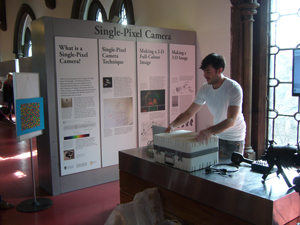 2 April - 27 March 2016
2 April - 27 March 2016
Hunterian Museum
Admission free
Researchers from the Optics Group in the University's School of Physics and Astronomy are developing experimental cameras that don’t sense light with millions of pixels, but instead just require one pixel. This technique allows for the development of very low-cost cameras sensitive to colours of light that normal cameras don’t see, like infrared. These have potential applications in spotting gas leaks, night vision, seeing through smoke, infrared microscopes, and medical diagnostics.
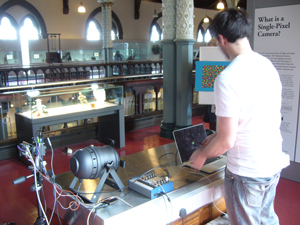 This Science Showcase, in conjunction with the International Year of Light and Light-based Technologies 2015, showcases both this cutting edge research in computational imaging and broader research within the University of Glasgow on light and light-based technologies, such as the use of lasers in gravitation research.
This Science Showcase, in conjunction with the International Year of Light and Light-based Technologies 2015, showcases both this cutting edge research in computational imaging and broader research within the University of Glasgow on light and light-based technologies, such as the use of lasers in gravitation research.
Our supporting events programme features Insight Talks, 30 minute Friday Lunchtime Talks, and hands-on Sunday Science Demonstrations by graduate students from the Optics Group.
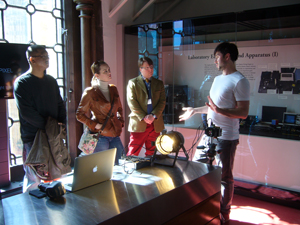 Pixels are light sensitive detectors found in the sensors of digital cameras. Modern cameras typically contain an array of several million pixels (megapixels). Improved manufacturing and high demand has produced cheap cameras for capturing visible light, but cameras that can capture wavelengths of light outside the visible spectrum remain expensive. A digital camera can cost as little as £5 per megapixel, whilst a shortwave infrared camera can cost over £50,000 per megapixel. Affordable high-performance computing has helped to pave the way for a new generation of computational imaging technologies capable of producing images of light across the electromagnetic spectrum using just a few pixels.
Pixels are light sensitive detectors found in the sensors of digital cameras. Modern cameras typically contain an array of several million pixels (megapixels). Improved manufacturing and high demand has produced cheap cameras for capturing visible light, but cameras that can capture wavelengths of light outside the visible spectrum remain expensive. A digital camera can cost as little as £5 per megapixel, whilst a shortwave infrared camera can cost over £50,000 per megapixel. Affordable high-performance computing has helped to pave the way for a new generation of computational imaging technologies capable of producing images of light across the electromagnetic spectrum using just a few pixels.
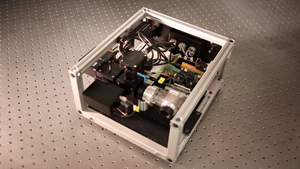 The single pixel camera technique involves illuminating an object with flickering, changing patterns that resemble crossword puzzles. These patterns are generated by a digital light projector, which contains an array of tiny programmable mirrors. A single pixel detector is used to measure the intensity of the light reflected by the illuminated object. The intensity of the backscattered light from one pattern does not provide enough information to create an image, but by rapidly projecting a known sequence of light patterns, and each time measuring the light reflected by the object, computational techniques can be used to calculate a 2-D image.
The single pixel camera technique involves illuminating an object with flickering, changing patterns that resemble crossword puzzles. These patterns are generated by a digital light projector, which contains an array of tiny programmable mirrors. A single pixel detector is used to measure the intensity of the light reflected by the illuminated object. The intensity of the backscattered light from one pattern does not provide enough information to create an image, but by rapidly projecting a known sequence of light patterns, and each time measuring the light reflected by the object, computational techniques can be used to calculate a 2-D image.
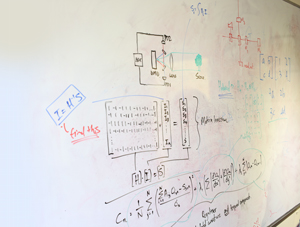 Another approach uses the mirrors in the projector not to project light, but rather to mask incoming light from an object with the same rapidly changing sequence of patterns, whereupon the masked light is measured on a single pixel.The Glasgow Optics Group is developing imaging techniques to capture shape, colour, pattern, and even motion using single pixel detectors combined with computer processing power.
Another approach uses the mirrors in the projector not to project light, but rather to mask incoming light from an object with the same rapidly changing sequence of patterns, whereupon the masked light is measured on a single pixel.The Glasgow Optics Group is developing imaging techniques to capture shape, colour, pattern, and even motion using single pixel detectors combined with computer processing power.
In their research they use children's toys as test objects, which are on display in the museum for the duration of the Showcase. Also on display is a re-creation of a experimental camera from the Optics Lab, used for a computational imaging experiment using structured illumination to retrieve 2-D spatial information from a single photodetector.
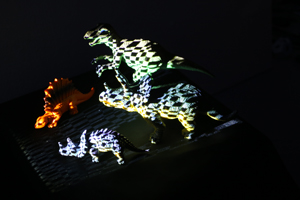 Other artefacts and objects on display include 3-D printed components that the researchers used to make cheap and flexible experimental apparatus, alongside the 3-D printer itself.
Other artefacts and objects on display include 3-D printed components that the researchers used to make cheap and flexible experimental apparatus, alongside the 3-D printer itself.
Recent profiles and press for the Glasgow Optics Group and the Science Showcase can be found here:
Single-pixel power: scientists make 3-D images without a camera
Glasgow University News Report (includes video) 17 May 2013.
Optics: leading lights
Profile of Professor Miles Padgett in Nature, 11 February 2015
Single-Pixel Cameras
A review of our Science Showcase in The Gist (Glasgow Insight into Science and Technology), 18 June 2015.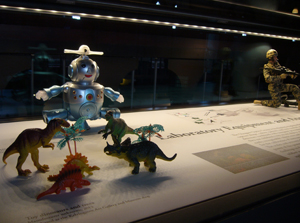
Recent papers on single-pixel imaging and related research by the Glasgow Optics Group and their academic partners can be found here:
3-D Computational Imaging with Single-Pixel Detectors
SCIENCE 340 no. 6134 pp.844-847 (17 May 2013).
Fast full-colour computational imaging with single-pixel detectors
OPTICS EXPRESS 21 no.20 pp.23068-23074 (23 September 2013).
Single-pixel infrared and visible microscope
OPTICA 1 no.5 pp.285-289 (2014).
Ghost Imaging in Three Dimensions
SCIENCE 340 no.6134 pp.821-822 (17 May 2013).
3-D computational ghost imaging
Proc. SPIE 8899, Emerging Technologies in Security and Defence; and Quantum Security II; and Unmanned Sensor Systems X, 889902 (October 16, 2013).
View the text panels from the Single Pixel Cameras Science Showcase:
Single Pixel Cameras wall panels

